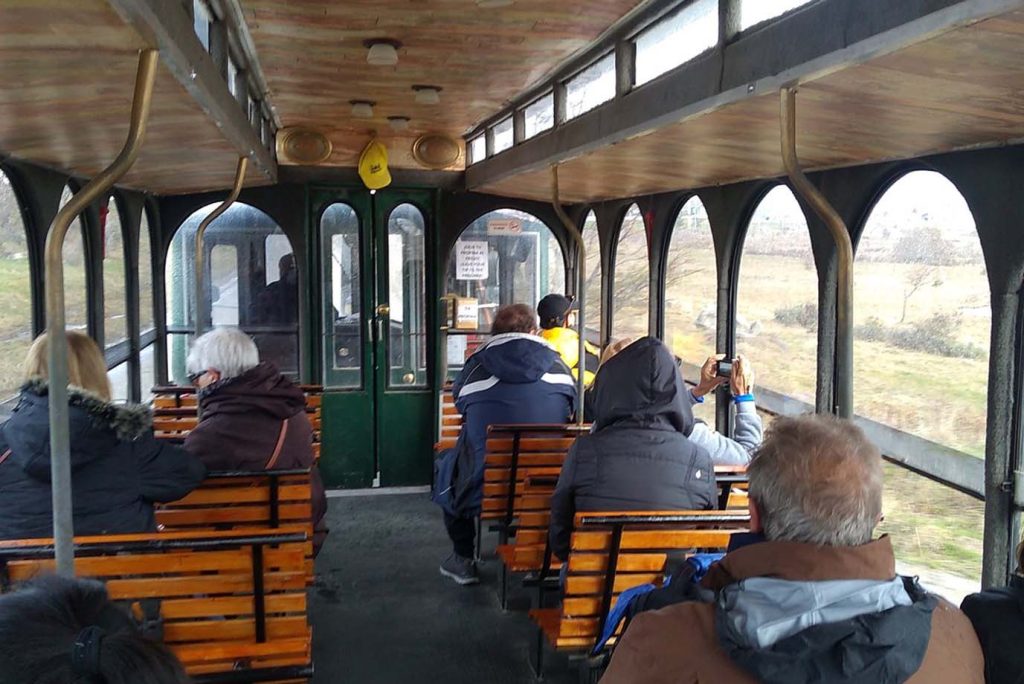Nestled on the southern tip of Argentina, cradled by the Andes Mountains and kissed by the Beagle Channel, lies the enchanting city of Ushuaia. Known as the “End of the World,” this remote destination beckons travelers with its rugged landscapes, vibrant culture, and rich history.
Preparing for the Journey
Before embarking on any adventure, proper preparation is key. For my trip to Ushuaia, I made sure to pack essentials such as warm clothing, sturdy hiking boots, and waterproof gear. The weather in Ushuaia can be unpredictable, with temperatures fluctuating throughout the day, so dressing in layers is advisable. Additionally, I equipped myself with a good quality camera to capture the breathtaking scenery and a reliable travel guidebook to navigate the city’s attractions.
When traveling to Ushuaia, you’ll find that the daylight and nighttime conditions differ significantly from other places. Ushuaia is located at the southernmost tip of South America, so the duration of daylight varies greatly throughout the year. Here’s an explanation of the daylight and nighttime conditions in Ushuaia, along with some tips:
Daylight and Nighttime Conditions:

1. Summer (December to March): Summer is one of the liveliest seasons in Ushuaia. During this time, daylight hours are relatively long, sometimes lasting until 10 p.m. or even later. This means you can enjoy more outdoor activities such as hiking, exploring the national park, or wildlife spotting without worrying about darkness.
2. Autumn (April to May): As summer ends, the balance between daylight and darkness gradually restores. Temperatures start to drop, but you can still engage in various outdoor activities during the day. Nights begin to get longer, but you still have the opportunity to enjoy nightlife and chances to observe the aurora.
3. Winter (June to August): Winter is the off-peak season in Ushuaia, with shorter daylight hours and longer nights. Darkness and cold envelop the city, but this is also the best time to admire the aurora. You can still engage in some outdoor activities during the day, but warm clothing is necessary.
4. Spring (September to November): With the end of winter, spring brings an increase in daylight hours and rising temperatures. This is an excellent time to observe migrating birds and witness the revival of vegetation. Nights become shorter, but there’s still a chance to observe the aurora.
Tips:
1. Be Weather-Aware: The weather in Ushuaia can be unpredictable, with sudden temperature drops, rainfall, or strong winds. Before heading out, check the weather forecast and carry appropriate clothing and gear for various weather conditions.
2. Respect the Natural Environment: If you’re engaging in outdoor activities like hiking or birdwatching, be sure to respect the natural environment. Avoid damaging vegetation or disturbing wildlife.
3. Safety First: Safety is paramount during outdoor activities. Ensure you have adequate equipment and knowledge to handle any emergencies, such as getting lost or injured.
4. Be Mindful of Daylight Changes: Due to significant daylight changes in Ushuaia, especially during summer, you may lose track of time. Consider this in your travel plans to make the most of both daylight and nighttime hours.
5. Check Shopping and Dining Hours: The operating hours of shops and restaurants in Ushuaia may vary by season, especially during winter. Familiarize yourself with local operating hours to avoid missing out on shopping or dining opportunities.
When traveling to Ushuaia, stay aware of the local daylight and nighttime conditions and take appropriate precautions to ensure a safe and enjoyable journey.
Getting There: Traveling to the End of the World
Reaching Ushuaia is an adventure in itself, as the city is situated at the southernmost tip of Argentina, far from major urban centers. For most travelers, flying is the most convenient option. Ushuaia’s Malvinas Argentinas International Airport (USH) offers connections to several cities in Argentina, including Buenos Aires, as well as direct flights from Santiago, Chile.
As I boarded my flight to Ushuaia, I couldn’t help but feel a sense of anticipation for the adventures that awaited me. The flight itself was relatively smooth, with stunning aerial views of the snow-capped peaks of the Andes Mountains and the turquoise waters of the Beagle Channel. Upon arrival at Malvinas Argentinas International Airport, I was greeted by crisp mountain air and panoramic vistas, a taste of the natural beauty that awaited me in Ushuaia.
Navigating the City: Tips for Getting Around

Once in Ushuaia, navigating the city and its surrounding attractions is relatively straightforward. The city center is compact and easily walkable, allowing visitors to explore its charming streets and waterfront promenades on foot. However, for those venturing further afield or seeking to visit attractions outside the city, there are several transportation options available.
1. Taxis: Taxis are a convenient and reliable mode of transportation in Ushuaia. They can be hailed from the street or booked through hotel concierge services. It’s important to note that taxi fares in Ushuaia can be on the higher side, so it’s advisable to confirm the fare with the driver before starting the journey.
2. Rental Cars: For travelers looking for more flexibility in their explorations, renting a car is a popular option. Several car rental agencies operate in Ushuaia, offering a range of vehicles to suit different budgets and preferences. However, it’s essential to be aware of the driving conditions in Ushuaia, especially during the winter months when snow and ice can make roads slippery and challenging to navigate.
3. Public Transportation: Ushuaia has a limited public transportation system consisting of buses that serve the city and its outskirts. While not as convenient as taxis or rental cars, buses are a budget-friendly option for getting around. It’s advisable to check the bus schedules and routes in advance, as services may be less frequent, especially on weekends and holidays.
Exploring the Attractions: Unveiling Ushuaia’s Hidden Gems
Ushuaia is blessed with an abundance of natural beauty and cultural heritage, offering travelers a myriad of attractions to explore. From rugged mountains and pristine glaciers to historic landmarks and vibrant cultural sites, there’s something for everyone in this end-of-the-world destination. Here are some of the highlights from my own explorations in Ushuaia:
1. Tierra del Fuego National Park:
Located just a short drive from Ushuaia, Tierra del Fuego National Park is a wilderness paradise teeming with biodiversity and natural wonders. Spanning over 630 square kilometers (240 square miles), the park offers a range of outdoor activities, including hiking, birdwatching, and boat tours along the Beagle Channel.
2. Martial Glacier:
For outdoor enthusiasts seeking adventure, a hike to Martial Glacier is a must-do activity in Ushuaia. The trailhead is easily accessible from the city center, and the hike offers breathtaking views of the surrounding mountains and valleys. During the winter months, the glacier transforms into a popular spot for skiing and snowboarding.
3. Beagle Channel Boat Tours:
Exploring the Beagle Channel by boat is a memorable experience that allows travelers to soak in the region’s stunning scenery and wildlife. Boat tours typically depart from Ushuaia’s harbor and venture out into the channel, passing by iconic landmarks such as Les Eclaireurs Lighthouse and Sea Lion Island. Along the way, passengers have the opportunity to spot seabirds, seals, and even whales during the migratory season.
4. Museo Marítimo y del Presidio de Ushuaia:
Delve into Ushuaia’s rich maritime history with a visit to the Maritime and Prison Museum. Housed in the city’s former prison complex, the museum offers insight into the lives of early explorers, indigenous peoples, and inmates who once inhabited the region. Exhibits include historical artifacts, interactive displays, and preserved prison cells, providing a fascinating glimpse into Ushuaia’s past.
5. End of the World Train:
Experience a journey back in time aboard the End of the World Train, a historic steam locomotive that traverses the rugged landscapes of Tierra del Fuego National Park. The train departs from the End of the World Station, located just outside Ushuaia, and follows a scenic route through forests, rivers, and mountains. Along the way, passengers learn about the region’s history and ecology from knowledgeable guides.
6. Laguna Esmeralda:
Nestled amidst the mountains of Tierra del Fuego, Laguna Esmeralda is a hidden gem waiting to be discovered. The hike to the lagoon takes visitors through pristine forests and valleys, culminating in breathtaking views of the emerald-green waters surrounded by snow-capped peaks. It’s a challenging but rewarding trek that showcases the raw beauty of Ushuaia’s wilderness.
Embracing the Spirit of Adventure
From the rugged landscapes of Tierra del Fuego National Park to the historic charm of its museums and landmarks, Ushuaia captivated me with its unique blend of natural wonders and cultural heritage.
Whether hiking through pristine wilderness, cruising the Beagle Channel, or exploring the city’s streets, every moment in Ushuaia felt like a new adventure waiting to unfold. I hope this guide inspires fellow travelers to embark on their own odyssey to the end of the world and discover the magic of Ushuaia for themselves.

